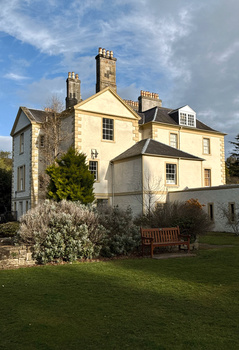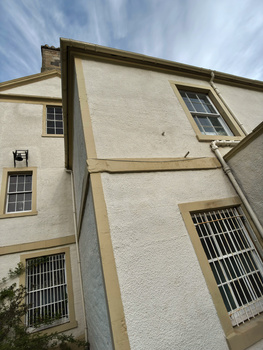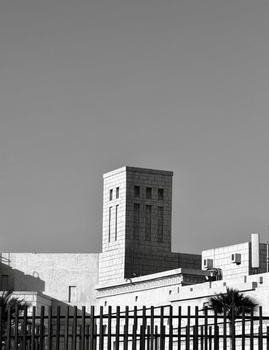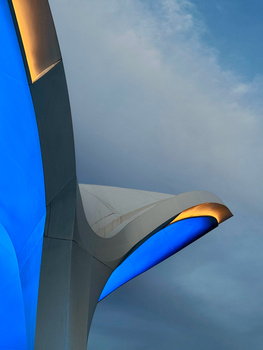The Leica LUX app brought some fresh tools to mobile photography, but handling your phone like a real camera? That’s where the LUX Grip steps in. This isn’t just a Bluetooth shutter button. It’s an ergonomic extension that is meant to give you a DSLR-style hold while unlocking full control over your iPhone’s native features and LUX app functionality.
I’ve used it with the iPhone 15 Pro Max in various locations, and it certainly worked flawlessly. The difference in grip and confidence was immediate. It felt more like carrying a compact camera than a phone. And that mental shift matters. You shoot differently when you feel like you’re holding a camera, not just a screen.
Specifications
-
Connection: Bluetooth*
-
Mount: Magnetic clamp with adjustable tension
-
Battery: Rechargeable (USB-C), lasts weeks between charges
-
Two-stage shutter (half-press to focus, full press to shoot)
-
Customizable control dial (default: exposure compensation)
-
Rear function button (programmable)
-
Compatibility: iPhone 12 and newer
-
Build: Metal
-
Weight: Approx. 80 g
-
Tripod Mount: Standard 1/4”-20 thread
*Supported App: Leica LUX (iOS only)
Ergonomics and Feel
The first thing you notice is the grip—it fits the hand like a small mirrorless body. At first, I was apprehensive about the full metal finish of the grip. Would my hand slide off, dropping my phone? Should this have a rubber grip for better friction? Soon enough, my apprehensions were gone, as not once did my grip slip, nor did I drop the phone. The smooth metal finish simply works.
Having a physical shutter button changes how you compose. You start using both hands again. You raise the phone to your eye level rather than holding it out like a selfie cam. It’s subtle, but it improves your shot discipline.

Controls and Customisation
The control dial is certainly the most useful addition. By default, it adjusts exposure compensation. But you can change it to ISO, shutter speed, or manual focus depending on how you’ve set the LUX app.
The dial feels tactile, not cheap. The clicks are distinct—not audibly, but you feel the response when pressing them—and there’s no lag between turning and response.

Connection and Reliability
Pairing was quick. Open the LUX app, press the grip button, and you’re set. It reconnects every time you open the app. Battery life? After quite a few days of casual use, it still showed blue. Leica claims over a month per charge with average use, so I cannot comment on that. There were no connectivity drops, nor lag between button press and shutter fire, making it dependable.

Reasons to Use
-
You shoot with intention on your phone.
-
You prefer physical buttons over tapping glass.
-
You value ergonomics and control in your mobile workflow.
Reasons to Pass
-
You don’t use Leica’s app. It only connects to the Leica app.
-
You shoot mostly auto.
-
You’re just after occasional mobile snapshots.
Final Thoughts
The LUX Grip isn’t a toy, and with its price tag, you will certainly know that. It’s a purpose-built tool for people who want to take mobile photography seriously. If you treat your iPhone like a camera, this helps.
At first, I was disappointed that the Bluetooth connectivity of the grip didn’t recognize other camera apps on the phone. But after using it in conjunction with the Leica LUX app, I fully understood why. They work seamlessly together.
It doesn’t add optics—it simply gives you better physical control over something you already carry everywhere. For me, it changed how I approached mobile shooting. I found myself photographing with the phone more deliberately, slowing down and thinking more. Not because of the sensor or software, but because of the way I was holding the camera. And sometimes, that’s what makes the biggest difference.
You can find more information and where to purchase one for yourself here.
















Since the grip attaches to the phone magnetically, did the grip and phone ever become separated while in use? Any thoughts on the grip and phone staying physically connected would be appreciated. Thanks!
In all the time I used it, Dan, it didn't. The magnet is strong and yes I was apprehensive of it coming apart when I first used it but this quickly disappeared.
Over $300 for a grip!!